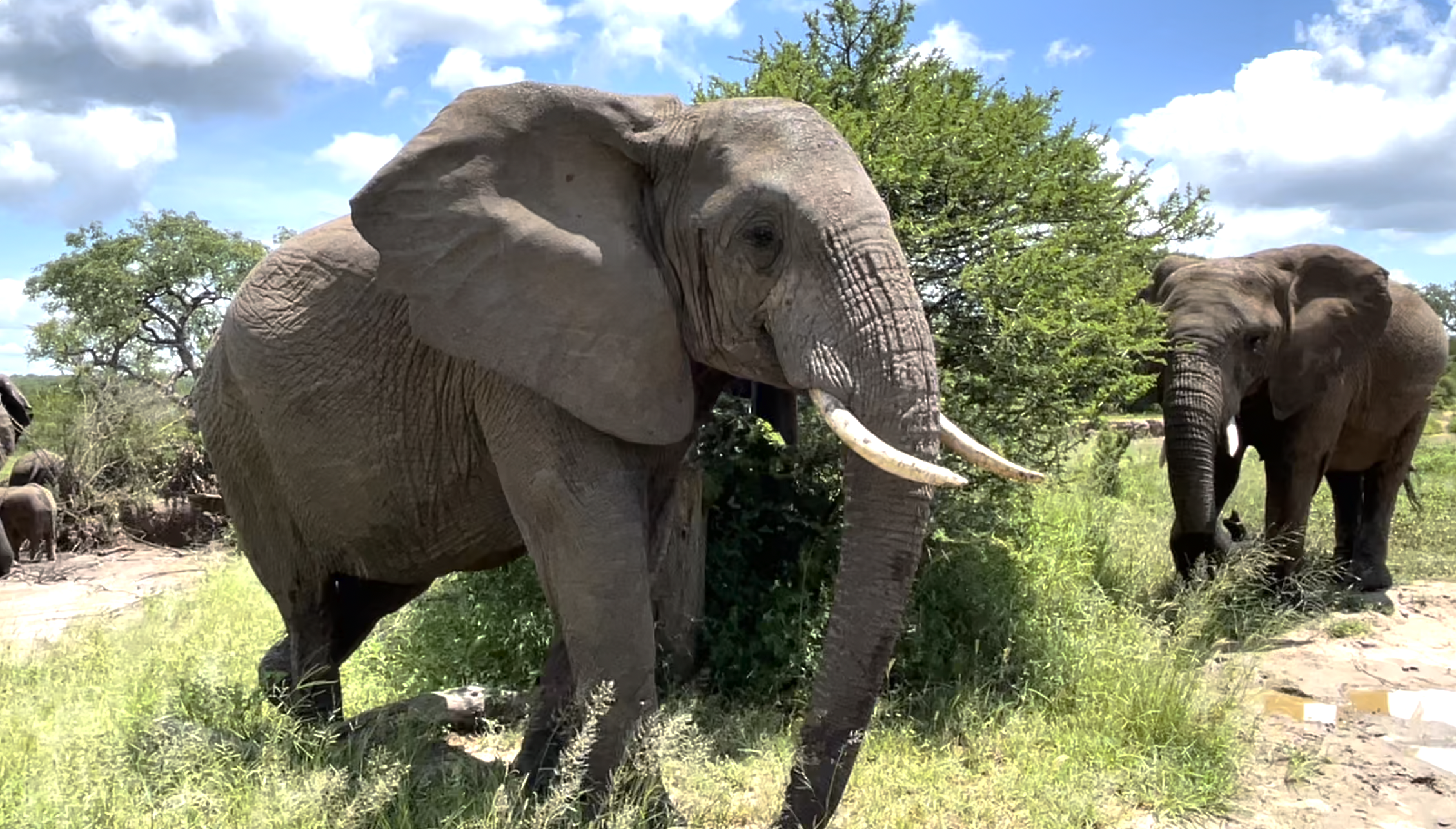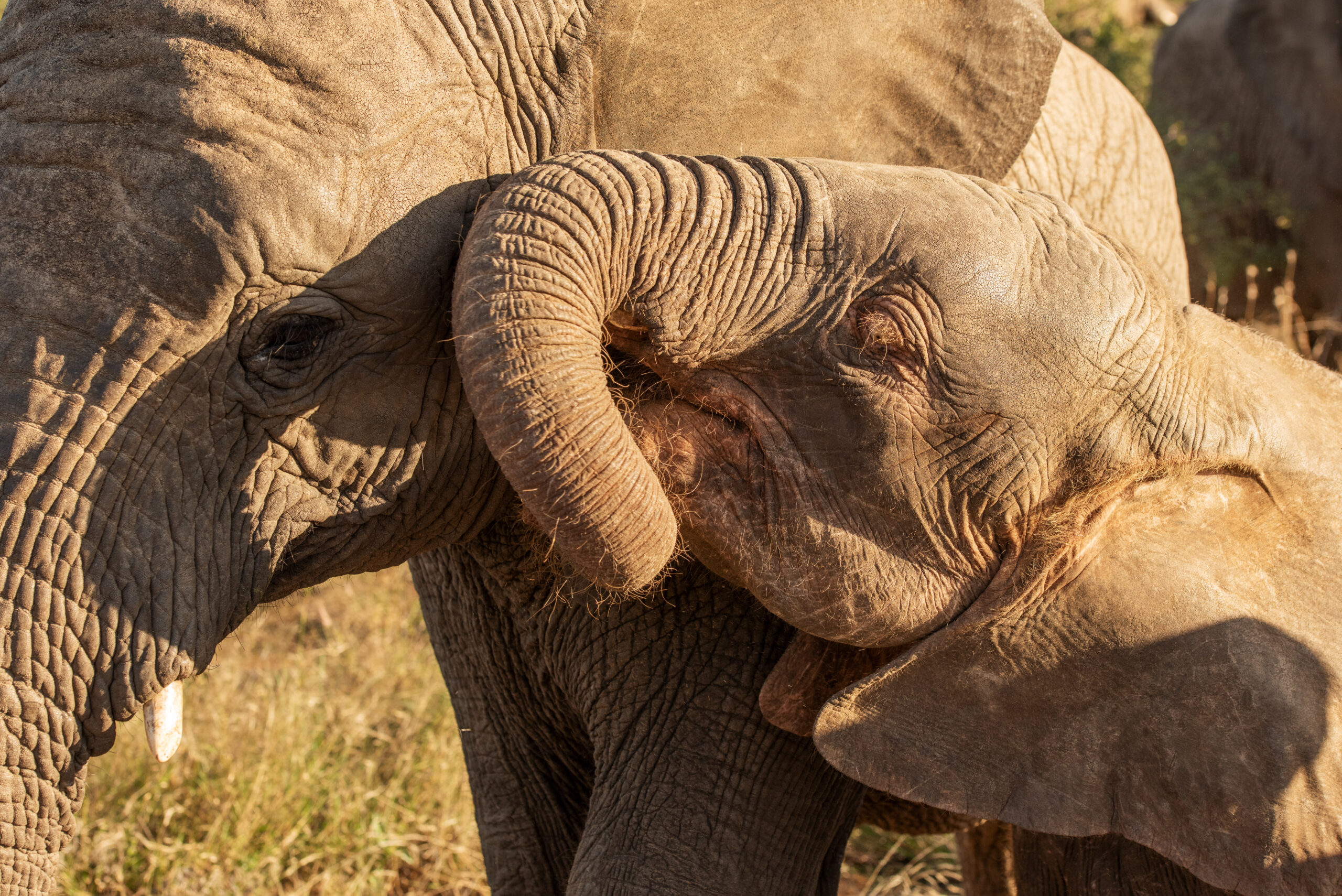As rare albino elephant orphan, Khanyisa approaches around two years of age in September this year, we have been looking forward to a new milestone presenting itself, and little by little it has: Khanyisa has tusks!
Having seen Khanyisa come into HERD (Hoedspruit Elephant Rehabilitation and Development), as a suffering four-month-old snare victim, with severe wounds around her cheeks and head, we are incredibly moved to see that her scars have healed and her tusks are emerging as great shows of strength. Khanyisa has a lot to get through as an orphan calf, but this milestone is a great show of success and perseverance for her and her carers.
While we could feel the beginnings of her tusks as hard bulges beside her mouth in August 2020, Khanyisa’s tusks are now visible. She was clearly growing them in secret for some time. It only became clear to us that they were growing out when she started to rub the sides of her mouth on hard surfaces, such as the wooden poles in the nursery, more and more. She would and continues to even rub her tusks against her team of dedicated elephant carers. The two hard protrusions on either side of her mouth are black at the base and white-yellow at the tip, with about half a thumb of tusk visible externally.
Adine Roode, Founder of HERD, South Africa’s first dedicated elephant orphanage, administers regular check-ups on the albino calf in our care, and also spotted the tiny tusks poking out of the sockets as Khanyisa lifted her head when drinking milk bottles at the orphanage.
A baby elephant will start to grow tusks at around two years of age, sometimes a little before, sometimes a little after. It is believed that the growth of the tusks doesn’t cause calves too much irritation or discomfort, nothing like with teething with their molars when they are still around a month old. As long as the tusks grow through what is called the tusk ‘pocket’, the calf will get through the milestone unscathed.
It does seem though that Khanyisa is intrigued by her little tusks. Rubbing them against surfaces could be a matter of curiosity and discovering her changing self. She seems to gain comfort from our care team rubbing her tusks for her too.
The African elephant requires up to 300 kilograms of leaves, grasses, bark and fruit every day, but this herbivore diet is often low in nutrients and minerals and in order to supplement their diet they eat soil, clay and rock. Scraping and digging with their tusks enables them to obtain materials that aid digestion and are essential in pregnant cows.
Khanyisa’s growing tusks will help her to feed herself in the wilderness better as she forages in the bush alongside her adoptive herd, the rescued Jabulani elephants. Especially as the seasons change and winter takes hold, there is less lush green grass to be devoured in the reserve and elephants turn to bark, bulbs and roots. Khanyisa is about to learn even more from her herd as she discovers life through tiny tusker eyes.
We are immensely grateful for the hard work, long hours and dedication of our Care Team who helped get Khanyisa to this new milestone, and to all our sponsors, fosters, donors and supporters for contributing to the extensive ongoing costs of not only feeding a growing baby elephant, but also keeping her safe and warm with her elephant family.
About The Elephant’s Tusks
Tusks are elongated and projecting incisors with the same physical characteristics as most mammalian teeth – they have a pulp cavity, dentine, cementum and enamel. During the first year of an elephant’s life, these tusks replace what is called “milk teeth,” growing from a socket in the skull. They continue to grow as the calf matures into adulthood, both in length and thickness. As a female, Khanyisa’s tusks will be more in line with young orphans, Timisa and Kumbura’s tusks. Male tusks are considerably greater and can grow to be about seven times the weight of female tusks over time.
Tusks cannot regrow, unlike one of the elephant’s six sets of teeth, meaning that should an elephant ‘chip a tooth’ while debarking a knobthorn tree or helping themselves to the insides of a baobab, their tusks will bear the scars and notches for life. Dominant bull, Sebakwe in the rescued Jabulani herd of elephants, recently broke the curved tip of his right tusk while foraging on a hardy tree in the reserve. Fortunately, they are very durable tools and don’t wear out quickly. Elephants can also lose or damage their tusks in fights.
Only male Asian elephants have tusks, but in the African species, both genders grow tusks. The only change to this is the effect of hunting and poaching for ivory on genetics and a resulting increase in tusklessness across in African elephants.
Read more: https://herd.org.za/the-anatomy-of-an-elephant-the-elephants-tusks/
To donate to HERD: https://www.globalgiving.org/projects/baby-albino-elephant-khanyisas-fundraiser/




 Comment
Comment






Thoroughly enjoy the YouTube videos.
I would like to post HERD donation information on my Facebook site if that is permissible. Maybe I can can a few donations.
Dear Larry, thank you so much! That is such a kind offer! Of course, we would love that 🙂 Thank you from all of us at HERD! The link is: https://herd.org.za/donate/
i would like to purchase one of your hats….how do i go about purchasing one????
Hi Gary, thanks so much for your interest and support! You can purchase them here: https://herd.org.za/shop/collections/caps Let us know if you need any assistance: admin@herd.org.za